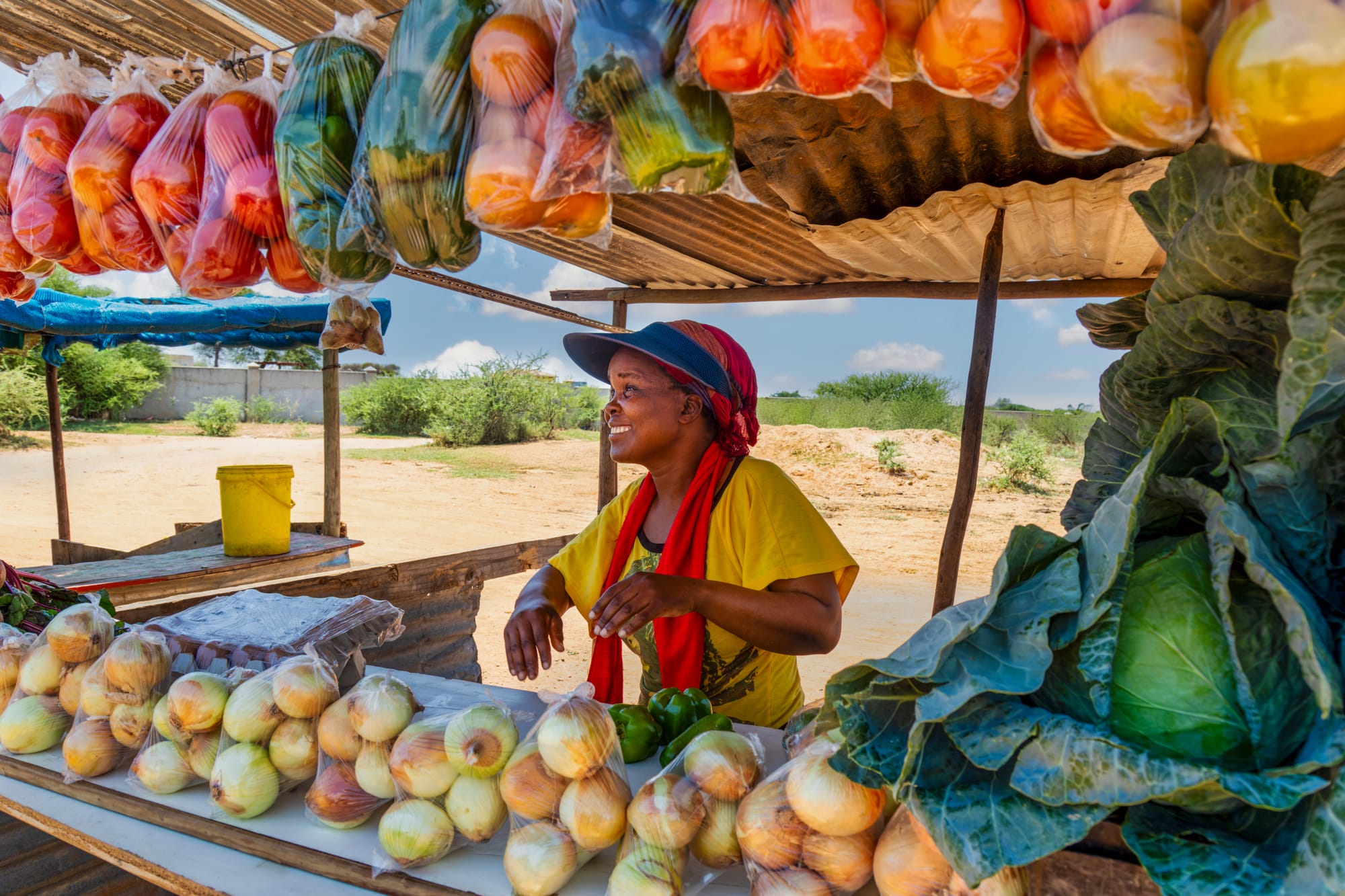When we harness market forces in developing countries, great things can happen—such as countries with surplus food selling to countries that need food. Over the past 15 months, teams from the U.S. Agency for International Development (USAID) East Africa and Southern Africa Trade and Investment Hubs together facilitated three regional trade forums—in Ethiopia, Rwanda, and Zambia. This convening of sellers and buyers generated impressive results: signed contracts to sell 1.21 million metric tons of staple grains, with an estimated value of $402 million. When delivered, the grains will be enough to feed 14.4 million people for 12 months.

My colleagues and I helped facilitate these forums. In January, Gerald Masila from the Eastern Africa Grain Council (EAGC), Scott Cameron from the USAID/Kenya and East Africa Office for Integration, and I shared our trade forum experiences in a webinar presented by the USAID knowledge management platforms Marketlinks and Agrilinks. Interest ran high among our participants from across the globe. We offer anyone interested in agriculture, food security, trade, and investment on the African continent these five key takeaways:
1) East and Southern Africa has enough agricultural base to feed itself and cease reliance on food aid.
- East and Southern Africa have endured records droughts since 2011, affecting food security across the entire region.
- Yet the region features vast amounts of arable land and variances in agro-ecological zones; if food grown in one area can flow readily via free trade to deficit countries, the region can wean itself from chronic dependence on emergency food assistance.
2) Production cycles across the region are complementary; grain surpluses can balance deficits during every season.
- East and Southern Africa have staggered planting/harvesting cycles; countries could be at surplus or deficit positions at different times of the year for any given grain.
- For example, Ethiopia, Kenya, and Uganda have the same maize crop calendar, while Burundi, Malawi, Rwanda, Tanzania, and Zambia have a different calendar.
- In 2016–2017, surpluses in the region met or exceeded deficits. For example, Ethiopia had a surplus of 1 million metric tons of maize while neighboring Kenya had a similar deficit.
- By selling surplus maize to Kenya, Ethiopian farmers and traders earned income to buy nutritious foods and pay for household expenses such as school needs.
3) Trade forums enable the private sector to drive value chain growth.
- Trade linkage forums do not distort the market the way emergency assistance can by depressing crop prices and other effects; in fact, these forums strengthen private sector involvement in areas such as seed and fertilizer, labor, transport, cold storage, and food processing.
- Our forums have brought together millers, traders, logistics companies, and banks in one place, people who traditionally do not do business with each other despite being neighbors. For example, our Ethiopian grain sellers are well versed in exporting grain to China and Italy for industrial use, but had never explored selling surplus to Kenya, despite that country’s chronic maize shortages.
- The forums demonstrated to governments that food shortages can be solved by business and functioning markets, if those governments craft and enact trade-friendly policies.
4) Challenges persist to regional trade of food staples; we must keep working to bring down the barriers.
- The main challenges include logistics, lack of trade finance, lack of harmonized grain standards, export bans, and other non-tariff barriers.
- The East and Southern Africa hubs worked with EAGC and Food Trade East and Southern Africa to successfully lobby for lifting export bans in Tanzania and Zambia and to support trade-friendly reforms.
5) Regional grain trade must be self-sustaining.
- The East Africa Hub developed and implemented forums in partnership with the EAGC, national grain traders associations, and chambers of commerce. We are currently supporting the Nairobi-based EAGC in opening an office in Addis Ababa to further facilitate sustainable grain trade between Kenya, Ethiopia, and other countries.
- The East Africa Hub recently helped establish the East African Community (EAC)’s Cross Border Traders Association to facilitate small cross-border trades, which currently make up 60 percent of grain trade in the six-nation EAC.
- Involving governments helps mobilize support for the regional trading of locally grown grain.

In bringing together these forums, we also absorbed some takeaways, such as the importance of trade finance for participants, the need for deep knowledge of logistics costs and transport routes for sold grains, and the effects of well-intentioned but ill-advised policy interventions, such as subsidies, that distort regional grain markets. But with $402 million in contracts generated in just the first year, the long-term market opportunity is obvious.
At the January webinar, our online participants posed good questions: on the role of lenders in African trade, on how trade can improve livelihoods in post-conflict zones, on how farmers (as opposed to traders) could make more money via increased cross-border trade, and more. We did not have time to get to all the questions, but these queries will inform our work as we pursue commercial solutions to feeding Africa’s hungry while putting more money in the pockets of farmers and others in agricultural value chains.




